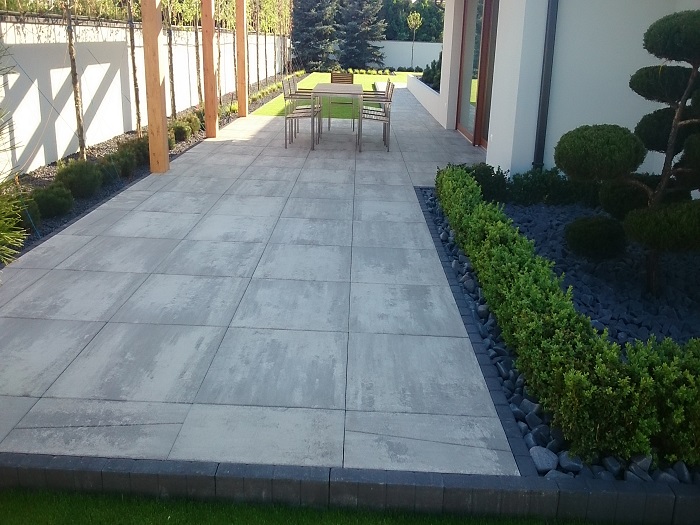 Concrete blocks are also ideal as terrace coverings. They can be laid precisely as a pattern.
Concrete blocks are also ideal as terrace coverings. They can be laid precisely as a pattern.
Advertising is looking for a suitable covering when renovating or installing an old terrace, can between natural stone slabs, choose conventional terrace slabs or concrete blocks. The latter are quite inexpensive, and they come in different forms, Dimensions and colors. The surfaces are also designed differently, sometimes coarse-grained and non-slip or blasted or sanded smooth.
Shapes and patterns
Advantages of the modern concrete block, who opted for seating, Stairs and terraces can be used, is above all the exact fit, due to the machine production. Furthermore, the dimensions of the individual stone formats are determined in this way, that one can lay patterns. Bends in the road or jagged bed edges can also be designed very well.
The substructure is important
Concrete blocks are laid out in a bed of sand. A layer of laying sand is placed on solid ground (0,2) or grit (2,5). The layer thickness must at least correspond to the thickness of the stone, best approx. 10 cm. It should be a washed one, no clayey yellow sand should be chosen, otherwise the stone surfaces may discolour.
First draw the laying area
If you want to cover your terrace with concrete blocks, should make an exact dimensional sketch on graph paper beforehand. Then some sample stones are drawn in for one square meter. In this way you can calculate the required number of stones very precisely. Don't forget the number of curbs either.
Tension the guide line
Before applying the sand layer, a guideline is stretched. In the case of terraces, the cord is aligned with the house. This means, the cord should sit exactly at the same height, where later the upper edge of the stones adjoins the house. This line is calculated from the top of the earth plus 10 cm layer of sand, plus stone strength, less 1,5 cm vibration dimension. The sand bed is compacted once with the vibrator. Then you put a few stones on the wall of the house to test, in order to control the final height. The professional stretches the cord with thin round iron bars (Sticker). They can be easily inserted and removed from sand and soil. The string line is precisely aligned with the spirit level and checked again and again. Before the concrete blocks are placed, the sand surface must be peeled off cleanly. This works best with guide rails, T-rails made of steel, 2,50 to 3 m long. They are placed in the sand bed on both long sides, so that they are flush with its surface. A straight lath is now drawn over these rails, in order to remove the superfluous sand and thus achieve an even installation surface.
Lay stones exactly
The laying work begins from one narrow side of the terrace. The first rows of stones are carefully and precisely laid according to a sample. Later, work will only be carried out from the stone surface that has already been laid, so that the sand formation remains as untouched as possible. The concrete blocks are laid out according to the laying plan, in the photo example with two stone sizes, With 30 x 30 cm and 15 x 15 cm dimensions. Only at the edge were two stones each measuring 15 x 15 cm. For cellar shafts or window cores, see right, fitting stones must be cut.
You do this with an angle grinder and special cutting discs. It is best to cut diamond discs. The concrete blocks are marked with marking chalk according to the fitting size and then cut about halfway with the cutting disc. Then put the stone upright and hit it from the back with a mallet, until he breaks through. Small sections can also be made with a chisel (Sharpening iron) knock off the concrete block. The concrete stone edges must be secured to form beds or lawns. You can use curb stones or a back support made of mortar for this. To do this, one part of cement is mixed with five parts of sand. This dry mixture is brought to the curb stones in a triangle shape. Then with water (Watering can) wet. The finished concrete block surface is finally made with a vibrator (to rent by the day in construction machinery rental) condensed twice. It is essential to place a protective mat under the vibrator slide, so that the stone surface is not damaged. As a final step, fine sand and water are slurried into the joints.
Short question, which concrete blocks were used for the terrace in the photo?